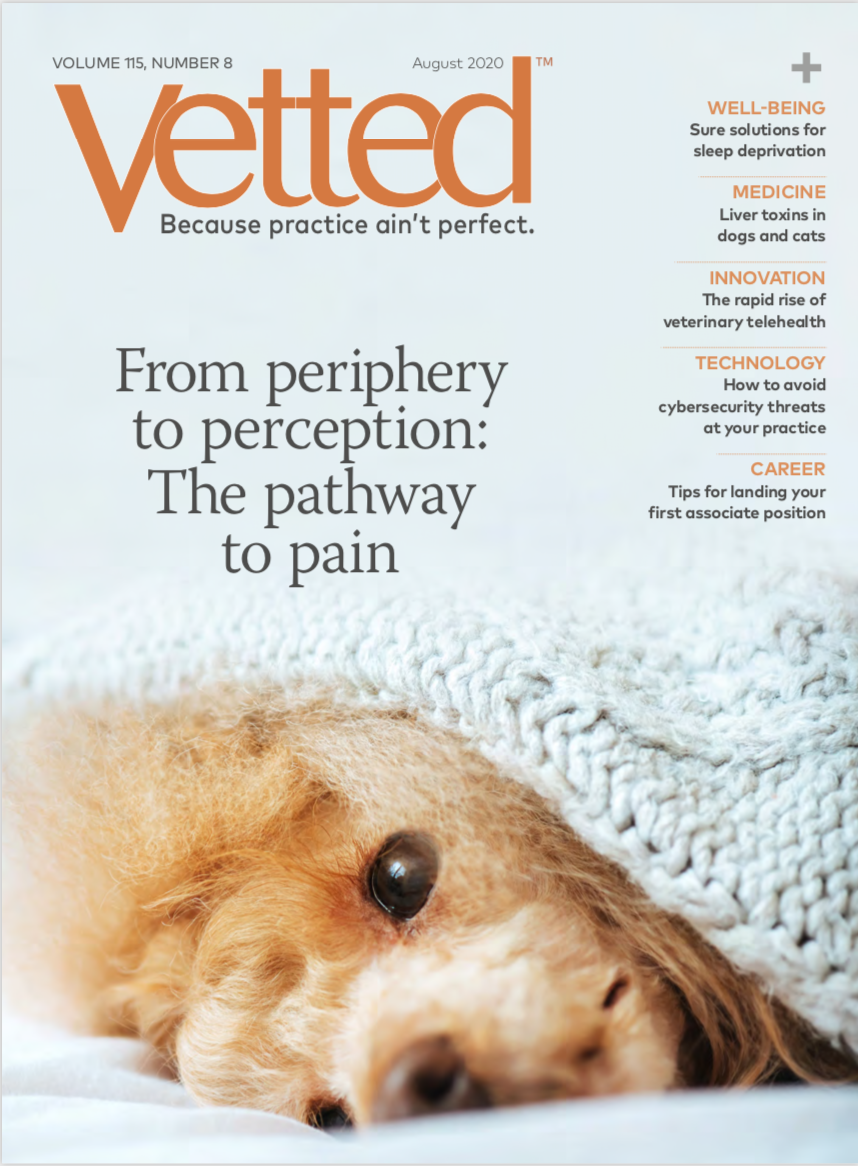Make it happen: Personal and practice financial growth for veterinarians
For veterinary practice owners, professional and personal goals and growth go hand in hand. Success is achieved through time, effort, discipline, and sacrifice—and a little professional guidance.
NIKCOA / stock.adobe.com

For many people, personal and professional life goals are intertwined, and this is certainly true for current and future veterinary practice owners. Reaching your personal goals often depends on having some level of financial freedom, which is only achieved when you reach your professional goals. If your goals include early retirement complete with travel and other luxuries (boats, vacation homes, etc.), then your professional goals will likely be more audacious than if you envision a more modest lifestyle and a later retirement.
The first step in helping improve your overall financial success is to decide (or update) what you want to achieve in your life and create a list of specific goals to get you there. Only once you consider the bigger picture can you begin to refine the details. One of these “details” for many veterinarians is practice ownership.
Achieving your personal financial goals
The definition of personal financial success is different for everyone. Some people have an arbitrary number or scenario in mind that they believe they will achieve if they “grind” their way to the top. But working hard and blindly reaching for the stars may not be as successful as implementing a defined and disciplined approach to investing and saving.
Many people either have no budget or have a budget that is not strict enough for them to improve their finances substantially. The fact is that realizing financial success will likely involve time, effort, discipline, and sacrifice. If you are willing to make tough decisions and take the time to plan the framework for your personal financial growth, then all that is left to do is execute your plans and begin to see the results.
One way to determine where to make cuts in spending is to categorize your goals as needs, wants, or wishes. This allows you to see what you can do now and what will have to wait, giving you a broader understanding of what you are able to accomplish and when.
One of the best ways to create a disciplined budget is the “50/30/20” rule. This method dictates how much of your after-tax earnings you can allot for three types of spending:
- 50% is spent on your essential fixed costs and (e.g., rent/mortgage, groceries, utilities).
- 30% goes toward your wants (dining out and other discretionary spending).
- 20% flows right into savings/investing and paying down bad debt (credit cards, high-interest loans, etc.).
To make a real difference in your financial habits and bottom line, this 20% number is the “magic sauce.” If your spending is allocated correctly, you should reach your desired position in due time.
Achieving your professional goals
The value of a practice is realized by an owner when the practice is sold. Understanding what drives practice value and how to improve it is critical. There are two primary markets in veterinary medicine today in which a practice can be sold. The first is the historical market, which is when a practice is sold from one veterinarian to another. The second is the corporate market, which is when a practice is sold from a veterinarian to a corporate entity that owns numerous practices (and may or may not be owned by other veterinarians).
The amount buyers in each market are willing to pay varies, but the practice’s profitability is almost always the most important determinant of practice value. Whether you are 2 years or 30 years away from selling your practice, this is a critical metric to understand, yet most owners don’t know what that number is for their practice. Improving profitability not only will increase your practice’s value at the time of sale, it also will increase your cash flow during ownership.
Determining your practice’s profitability
Calculating the true operating profits of a practice is not a simple task. None of the standard financial or management reports a practice usually gets include this figure. Neither the taxable income from the tax return nor the net income from the profit and loss statement represents true profitability.
The operating profit is the difference between the operating revenue and the expenses a practice incurs. Operating revenue and expenses include only those items normally and necessarily seen in day-to-day practice operations, such as fees for professional services, and drug and medical supply expenses. These items should be listed at fair market value.
For ease of comparison with other practices, a hospital’s profit margin is generally stated as a percentage, which is calculated as practice profits divided by gross revenue. However, some items must be calculated differently to determine operating profit versus taxable income or net income. These include practice owner payments, facility and equipment rent (if these items are owned by the practice owner and leased to the practice), services provided by family members to the practice, depreciation, interest on debt, and perks. The resulting percentage is the true operating profit of the practice, and it is important to compare this percentage with other investments you have and with that of other practices. An operating profit of 20% or higher is considered superior, 12% to 13% is average, and less than 6% is poor.
This all may sound a little daunting, but there are resources available to help. If you work with a veterinary financial adviser, this person should be able to calculate your profitability. VetPartners also offers resources to help guide you through this calculation process.
Converting profitability into practice value
Once the profitability figure is determined for a veterinary hospital, that number must be converted into the practice value via an appropriate capitalization rate (or cap rate). In practical terms, the cap rate is the required rate of return an investor needs in order to be persuaded to make an investment. There is no one correct rate for all situations—the rate is determined by the market and will vary depending on both external factors (e.g., the state of the economy) and internal factors (e.g., the level and quality of the company’s earnings, the amount of competition in the area). The rate is a reflection of the risks associated with owning and managing a veterinary practice, and continuing to generate the current level of profits. The inverse of the cap rate is a multiple; for example, if the cap rate is 20%, the multiple is 5 and the formula used to derive practice value is as follows:
To increase practice value, the management team needs to either increase profitability or decrease the risk associated with owning the practice (i.e., the risk associated with maintaining the practice’s current profitability).
A lack of profitability stems from revenues that are too low, expenses that are too high, or a combination of the two. Profitability can be improved in many ways, from increased marketing to better inventory control to improved team productivity.
A wide range of factors affects the risk related to owning a veterinary practice, including client demographics, the state of the facility, the quality of the management team, and the range of services offered, among others.
Increasing practice value involves three steps:
- Understand where the practice is doing well and where it needs improvement.
- Put plans in place to drive change.
- Monitor the success of those plans.
Working with a financial advisor or practice consultant may help not only in gaining a greater understanding of the issues that impact profitability but also in identifying and implementing solutions.
Synergy between practice and personal financial goals
It is very possible to have a thriving business and a personal financial state that has ample room for improvement and vice versa—the two are not mutually exclusive. Having a well-organized personal financial life can impact how your practice is run, and a well-run practice sets the stage for a fruitful personal financial future. The common dominator between these two aspects of financial fitness is planning.
Dr. Felsted has spent the past 20 years working as a financial and operational consultant to veterinary practices and the animal health industry. She served as CEO of the National Commission on Veterinary Economic Issues for 3 years. Dr. Felsted is active in multiple veterinary organizations, has written extensively, and speaks regularly at national and international veterinary meetings. She owns PantheraT Veterinary Management Consulting.
Miles Saunders owns and operates MNS Wealth Management LLC in Westport, CT. He can be reached at miles@mnswealthmanagement.com.
Westport Office: 55 Greens Farms Road, Suite 1 Westport, CT 06880 – Phone: 203-571-2312 www.mnswealthmanagement.com Registered representative offering securities and advisory services through Cetera Advisor Networks LLC (doing insurance business in CA as CFGAN Insurance Agency LLC), member FINRA/SIPC, a Broker-Dealer and a Registered Investment Advisor. Cetera is under separate ownership from any other named entity. For a comprehensive review of your personal situation, always consult with a tax or legal advisor. Neither Cetera Advisor Networks LLC nor any of its representatives may give legal or tax advice. All investing involves risk, including the possible loss of principal. There is no assurance that any investment strategy will be successful. Asset allocation is an investment strategy that will not guarantee a profit or protect you from loss.
